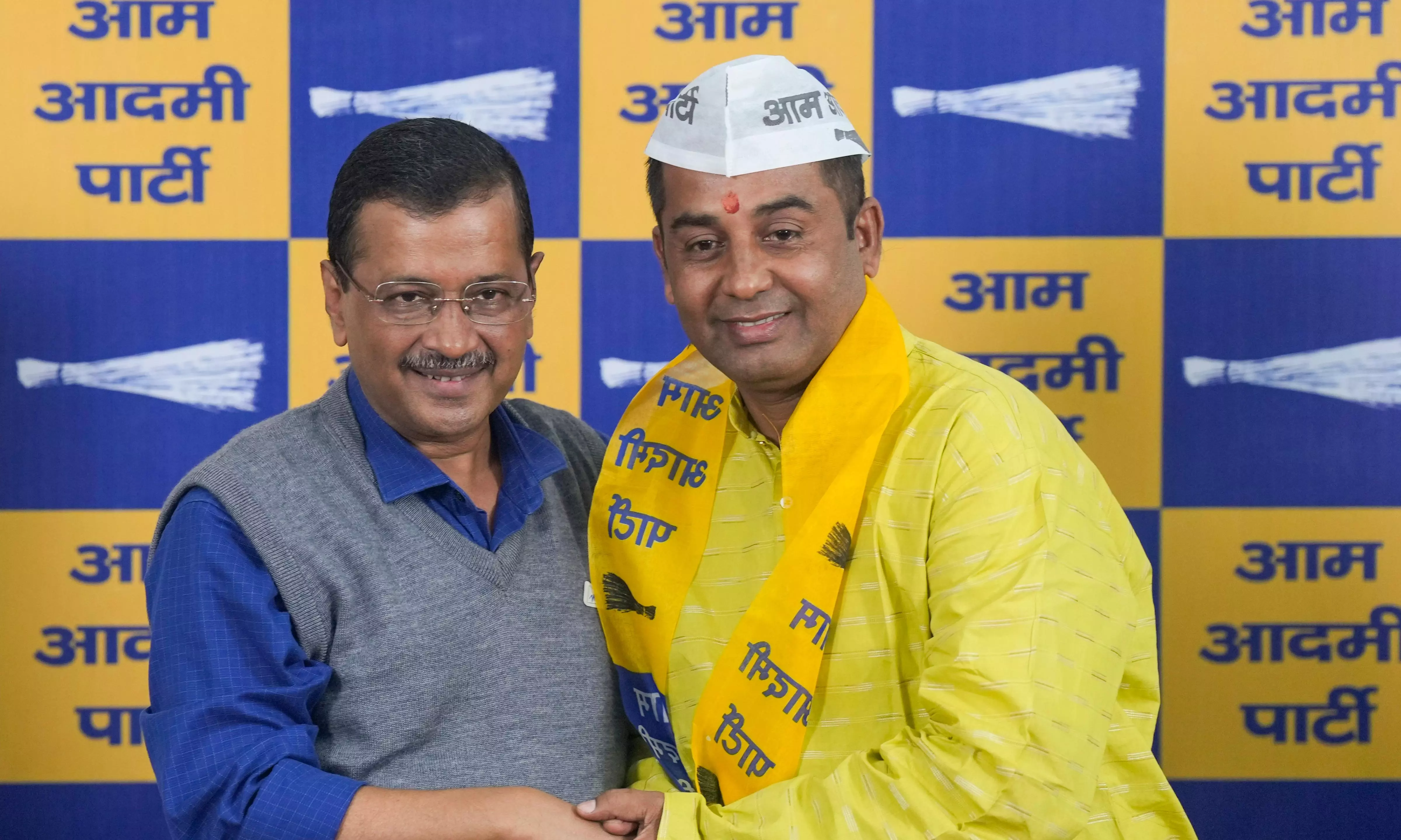
Whither governance? Caste calculations rule AAP-BJP's Delhi politics
Caste equations are keeping the two parties busy and this has openly been unleashed to poach each other’s men of consequence; Congress getting dragged in, too

No sooner than the AAP's Jat bet in Delhi, Kailash Gahlot, joined the BJP, the AAP announced another of its Jat MLAs, Raghuvinder Shokeen, as Gahlot’s replacement.
Shokeen will take oath as a minister to join Delhi’s Atishi government soon, says the AAP. This is to fill the vacancy caused by Gahlot’s resignation only a couple of months, or even less, before Delhi is billed to elect a new Assembly.
So, the caste-driven quid pro quo amid countdown to the Assembly battle has brought caste to the centerstage of the city’s politics in a more blatant way than ever before.
Also read | Delhi Assembly elections will revolve around Kejriwal – yet again
It may further sharpen sectarianism during the Delhi polls alongside similarly other divisive factors like regional and communal or ethnic fault-lines that already dog the capital. All to woo the voters in Delhi — like many other parts of the country. Or, through the rest of the Hindi belt.
AAP’s regional card
The day Gahlot quit, the AAP boss, Arvind Kejriwal, coincidently played the regional card. He inducted former BJP MLA Anil Jha to his party fold.
Jha was called on Sunday, November 17, to the Rouse Avenue AAP headquarters and hailed as the “voice of Poorvanchalis” — a regional force formed by streams of poor settlers trooping into Delhi from Bihar and Eastern Uttar Pradesh. They mostly come to eke out their daily bread and butter in ever growing Delhi.
This came only days after Kejriwal welcomed a couple of Delhi Congress’ Muslim politicos to the AAP in quick succession. And soon, BB Tyagi, a two-time former BJP councilor from East Delhi, was ushered into the AAP amid expectations to add more electoral heft to the ‘broom’, AAP’s election symbol. So, these days, the adage ‘new broom sweeps clean’ is literally in frantic play in Delhi.
Also read | AAP-hill battle | Road for Kejriwal’s return to CM’s chair riddled with hurdles
Delhi’s three-way tussle
The other competing side is the BJP while the Congress is a poor or distant third runner. Poaching each other’s caste-men’s leaders, regional bets and similar other vote-catchers have become the rule rather than an exception.
For the past 10 years, the AAP has been successful in consigning the BJP to the margins in Delhi politics while the Congress has nearly been wiped out from the electoral map of the capital.
Add another decade-and-a-half before Kejriwal’s advent to trace and understand the BJP’s loss of power in Delhi when the late Congress leader Sheila Dikshit stormed to rule the city. This was way back in 1998.
Dikshit and Kejriwal
Dikshit had the advantage of being born into a Punjabi family and got married into a Congress family from Uttar Pradesh. This naturally brought her the rare ability to strike a chord among both Punjabis and Poorvanchalis living in Delhi with remarkable ease.
Yet, she was upstaged by Kejriwal in 2013. Ever since then the Congress has not been able to come to grips with the grossly changed politics of the capital.
The AAP and BJP have almost patented their absolute sway over the Assembly and the Lok Sabha elections, respectively. The main reason behind this is the fact that Kejriwal has turned out to be the lone leader and solo player of his party in Delhi.
This is so despite the AAP having got the status of a national party in barely a decade since its inception.
Watch | Pollution becomes blame game: SC slams AAP, AAP blames stubble burning; Cong vs BJP
BJP’s missing strongmen in Delhi
Unlike earlier, when the BJP was run by its formidable and centrally-backed provincial leaders in Delhi like Madan Lal Khurana, Vijay Kumar Malhotra and Sahib Singh Verma, their party successors now at the helm of its city unit have turned out to be no match to the kind of the earlier leadership the BJP had.
Prime Minister Narendra Modi and his point-man Amit Shah do try to fil this gap during the elections but both have so far succeeded only in parliamentary battles and not in the Assembly, courtesy the AAP.
Since for decades Delhi has been gnawing and encroaching upon its surrounding villages together called Outer Delhi, the Jats and Gujjars of erstwhile rural periphery of the capital have come to have a significant say in Delhi’s politics.
What Dikshit achieved
This became palpable as far back as in 1998, when the BJP’s rather urbane Sushma Swaraj took the reins of the city government from her Jat party colleague Sahib Singh Verma shortly before the elections but lost badly to Sheila Dikshit.
Thus, the post of the Delhi Chief Minister passed on from one city-bred woman leader to another. This kept the supposedly posh, polished and cosmopolitan characteristics of Delhi unscathed.
The proof of this came when Delhi hosted the Commonwealth Games. It was also during the reign of Sheila Dikshit that metro rail became a reality. Without the Metro, Delhi’s air pollution could have been worse today and rendered the city unlivable.
Now, caste politics
But for those who matter and preside over Delhi, the election-time exigencies are proving to be more urgent.
Caste calculations have made them quite busy; and this has openly been unleashed to poach each other’s men of consequence. This is not confined to the AAP and BJP alone but has also dragged the Congress with an eye on the next February elections in Delhi.
It is indeed a sad day for what is called the National Capital Territory of Delhi.
